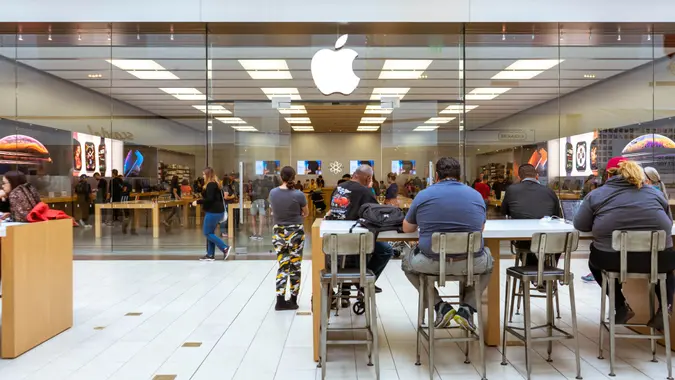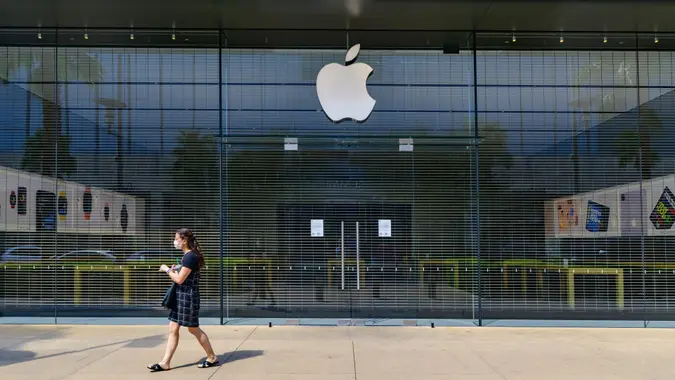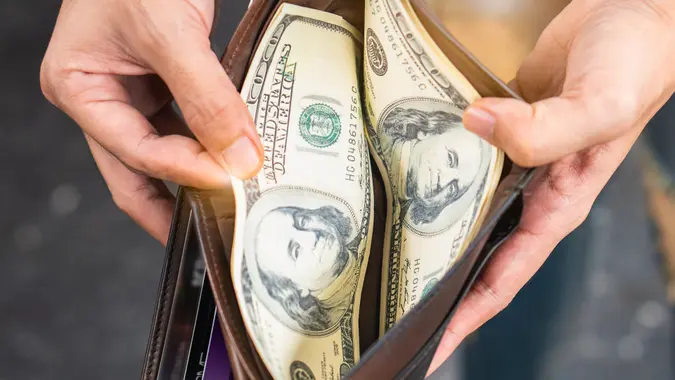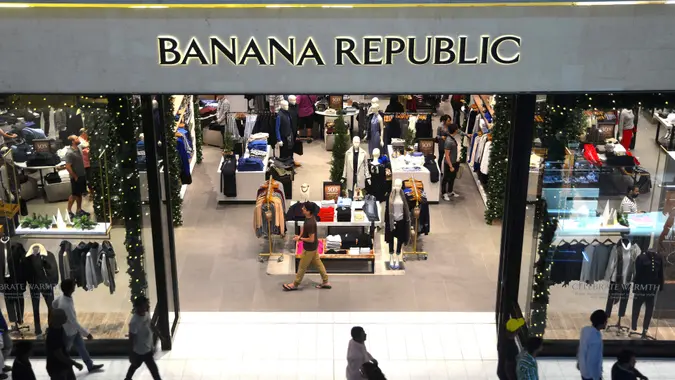Jaspreet Singh: Stop Spending So Much Money by Following the 24-Hour Rule

Commitment to Our Readers
GOBankingRates' editorial team is committed to bringing you unbiased reviews and information. We use data-driven methodologies to evaluate financial products and services - our reviews and ratings are not influenced by advertisers. You can read more about our editorial guidelines and our products and services review methodology.

20 Years
Helping You Live Richer

Reviewed
by Experts

Trusted by
Millions of Readers
Across the country, 61% of people live paycheck to paycheck, according to a LendingClub and PYMNTS survey. Of that group, over 10% — 16 million Americans — said overspending on non-essentials is the top reason they can’t break this paycheck-to-paycheck cycle.
And as costs increase, keeping your spending in check is getting harder. Last year, 23% of U.S. adults said they spent more money even though their income didn’t increase, according to the Federal Reserve.
One solution is to give yourself a breather between purchasing decisions, as an attorney and financial influencer Jaspreet Singh shares in his recent YouTube video. In particular, one of his suggestions is to follow the 24-hour rule when deciding what to buy.
What’s the 24-Hour Rule?
The 24-hour rule is where you give yourself a full day to consider whether you want to make a purchase.
Singh gives an example of going to the mall and seeing a sweater for $70. While you might impulsively want to buy it, the 24-hour rule would mean you go home and give yourself some time. If you wake up the next day and realize you don’t want to spend that money, “now you just avoided that impulse purchase,” says Singh.
If you still want or feel like you need that item after 24 hours, he adds that you can give yourself permission to do so. However, it’s still important to consider whether you can afford that item, even if you’ve given yourself time to let the impulsivity fade.
“If you don’t have the money to buy it, stop spending that money,” says Singh.
The 24-hour rule can also come into play for larger purchases. You may be shopping for a new TV and are impressed by the store displays. Or you may be browsing for new furniture and think what you see in the showroom looks nice, but you don’t want to spend hundreds or even thousands of dollars so quickly.
Rather than getting caught up in the moment, you might go home and realize you’re happy with your current TV or furniture. Or maybe you’ll wait until you’ve saved more money so the purchase doesn’t stress you out.
“Impulse buying isn’t always logical–it can be highly emotional. Things like the store environment, self-esteem and emotional well-being may affect a buyer’s decision,” according to Capital One.
By giving yourself some time and space, you can inject more objectivity into your spending, and ultimately, you will save more money.
“The easiest way to have more money right now is by not letting your money leave your bank account,” says Singh.
More From GOBankingRates
- Nearly 1 in 3 Americans Hit by a Costly Holiday Scam, Norton Survey Shows -- How To Avoid This
- Here's What Retirees Wasted the Most Money On in 2025 -- and How To Avoid It in 2026
- How Middle-Class Earners Are Quietly Becoming Millionaires -- and How You Can, Too
- 6 Safe Accounts Proven to Grow Your Money Up to 13x Faster
 Written by
Written by  Edited by
Edited by 

























